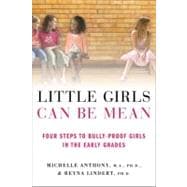
What is included with this book?
Dr. Michelle Anthony, an expert in developmental psychology, is mother to three young children, two girls and a boy. She is a certified K-3 teacher and president and cofounder of Wide-Eyed Learning, a company devoted to facilitating communication and learning between parents and children. She is also a columnist for Scholastic’s Parent and Child magazine. Dr. Anthony holds a B.A. in Education from Brown University, an M.A. in child studies from Tufts University, and a Ph.D. in developmental psychology from University of California at Berkeley. She lives in Centennial, Colorado.
Dr. Reyna Lindert, also an expert in developmental psychology, is mother to three young children, two girls and a boy. She is a certified parent educator and vice president and cofounder of Wide-Eyed Learning. She holds a B.S. in human development and family studies from Cornell University, and an M.A. and Ph.D. in developmental psychology from University of California at Berkeley. She lives in Beaverton, Oregon.
| Acknowledgments | p. xiii |
| A Note to Readers | p. xvii |
| About the Authors | p. xix |
| Laying the Foundation: The Four-Step Approach | |
| The Rise of Social Cruelty | p. 3 |
| How Can I Help My Daughter or Student? | p. 24 |
| What Is Bullying? | p. 26 |
| Building the Foundation | p. 28 |
| Facing Tough Situations | p. 29 |
| Following the Four-Step Plan | p. 30 |
| Observe | p. 32 |
| Connect | p. 34 |
| Guide | p. 40 |
| Support to Act | p. 44 |
| Integrating the Four Steps | p. 50 |
| How Long Will This All Take? | p. 52 |
| Think, Share, Do…Activity Bank for Part I | p. 54 |
| Observe | p. 56 |
| Connect | p. 58 |
| Guide | p. 62 |
| Support to Act | p. 68 |
| The Heart of the Matter: Applying the Four Steps to Real Situations Faced by Real Girls | |
| Side by Side: Best Friends, Worst Enemies | p. 77 |
| Dealing with a Turf War | p. 78 |
| When Best Friends Pull Away | p. 93 |
| Yo-Yo Friendships | p. 106 |
| Going Along with the Gang | p. 125 |
| When Girls Struggle to Fit In | p. 126 |
| When Girls Struggle with Feeling ôDifferentö | p. 138 |
| When Girls Struggle with Going Along with the Group | p. 150 |
| When the Group Turns Against Your Child | p. 162 |
| All Girls Can Be Mean: When Your Daughter Is Acting Like a Mean Girl | p. 179 |
| There Are Two Sides to Every Story | p. 180 |
| The Power Rush of Popularity | p. 195 |
| When Girls Struggle with Following the Group | p. 211 |
| Think, Share, Do…Activity Bank for Part II | p. 229 |
| Observe | p. 229 |
| Connect | p. 232 |
| Guide | p. 235 |
| Support to Act | p. 241 |
| Wrapping Up: Using the Four Steps in Your Home, School, or Office | |
| The Difference Between ôYoungerö and ôOlderö Girls | p. 256 |
| Facing All Kinds of Issues, Together | p. 259 |
| She Is Not Alone | p. 262 |
| Appendices | |
| Bully Stories for Home or School | p. 265 |
| ôWhat-Ifö Scenarios | p. 267 |
| Activities That Follow the Four Steps | p. 269 |
| Teacher Tips | p. 269 |
| Tips for Girls | p. 271 |
| Think, Share, Do… | p. 272 |
| Notes | p. 273 |
| Index | p. 275 |
| Table of Contents provided by Ingram. All Rights Reserved. |
The New copy of this book will include any supplemental materials advertised. Please check the title of the book to determine if it should include any access cards, study guides, lab manuals, CDs, etc.
The Used, Rental and eBook copies of this book are not guaranteed to include any supplemental materials. Typically, only the book itself is included. This is true even if the title states it includes any access cards, study guides, lab manuals, CDs, etc.